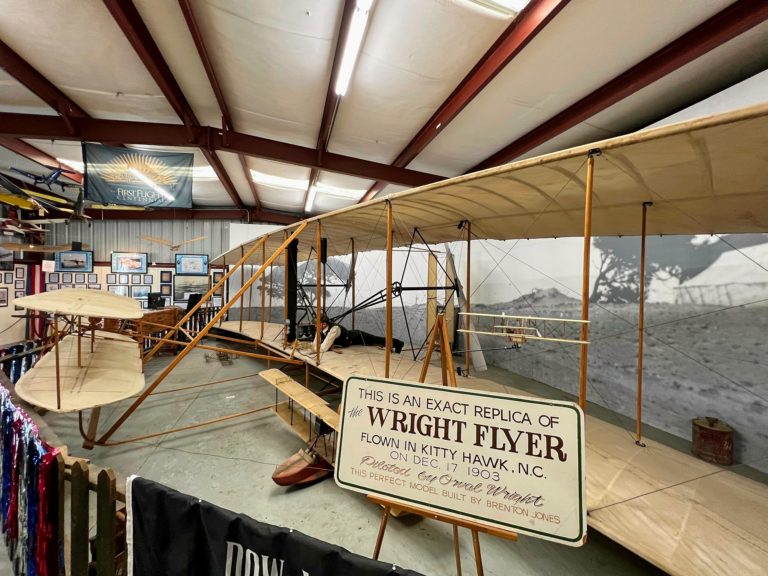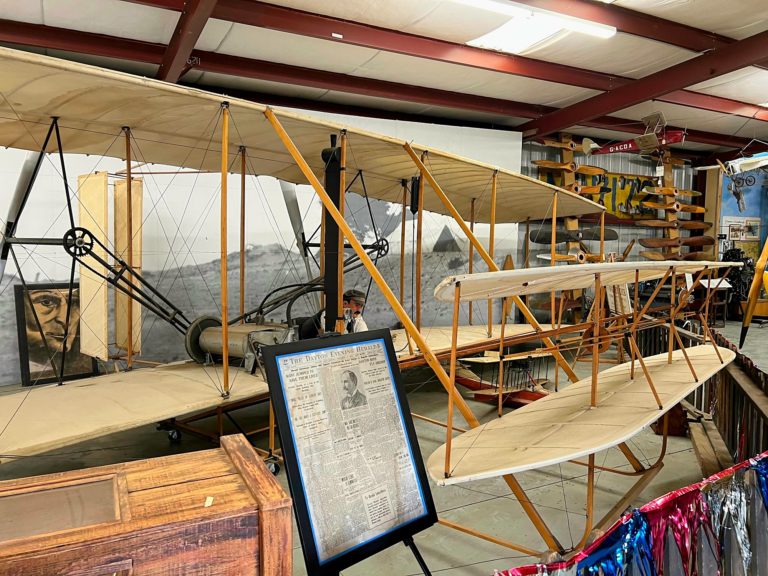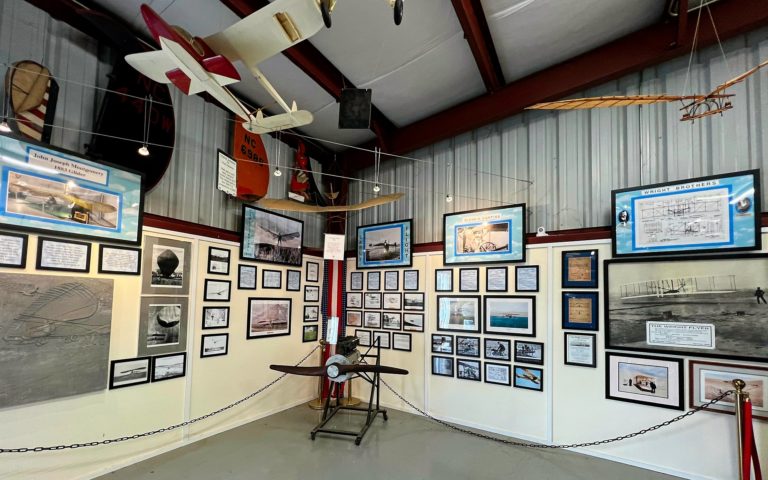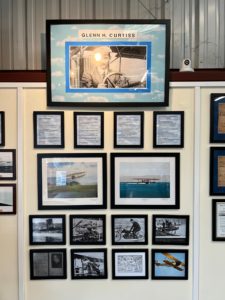The centerpiece of the Wings of History “Early Aviation” section is a full-scale model of the Wright Flyer. Most people are surprised by the large size of this aircraft. The Wright brothers had little margin for error after documenting several years of glider flights and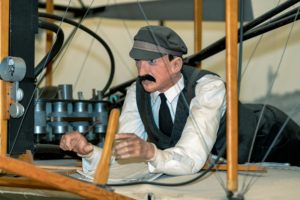 building a wind tunnel (also a full-scale example at the WOH museum). Assisting the Wright Brothers and other early aviators with experiments and publicity was French born engineer Octave Chanute.
building a wind tunnel (also a full-scale example at the WOH museum). Assisting the Wright Brothers and other early aviators with experiments and publicity was French born engineer Octave Chanute.
A century before the Wright Brothers’ first flight in December 1903, hot air balloons were used for recreation and soon by the military (hydrogen gas during the US Civil War),. The next phase of aeronautical experimentation was with gliders. Along with the Wright Brother there were many aviators flying gliders. German Otto Lilienthal and local engineering instructor John Montgomery from Santa Clara University were pioneers testing, flying, and tragically killed learning aircraft control.
“Early” with most technologies generally follows an irregular path of art and science. An initial inventor is followed by a plethora of new ideas, some of which are improvements. Such was the case with the Wright Brothers who were the first to fly under both control and power using a catapult and an engine built by Charley Taylor. The two pusher propellers provided just enough thrust to fly about 200 feet.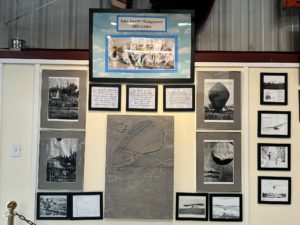
The Wright Brothers “wing warping” became the ailerons. The dilemma of the higher outside wing in a turn causing more drag(adverse yaw) was solved with a rudder. Balancing the center of lift and center of gravity was what now appears an awkward forward horizontal stabilizer. While mastering the crude controls, Orville and Wilbur began making longer flights…
The brilliant Glenn Curtiss was not far behind the Wright Brothers who while attempting to patent “the airplane” set off litigation with Curtiss. This situation stifled American aviation for years thus leaving European aviation more advanced at the beginning of World War I. The WOH museum has two photo walls of these early aviation pioneers.
War is often a catalyst for technology, and WWI saw the flight envelope of both airspeed and altitude significantly increased along with much better reliability.
Interestingly, the Wright Aeronautical Company would eventually be merged with Curtiss forming the Curtiss Wright Corporation, which then set up franchised flight training centers at many airports…

